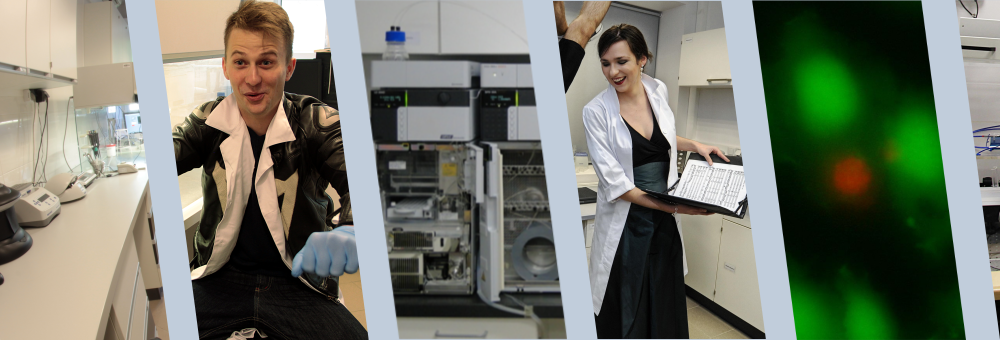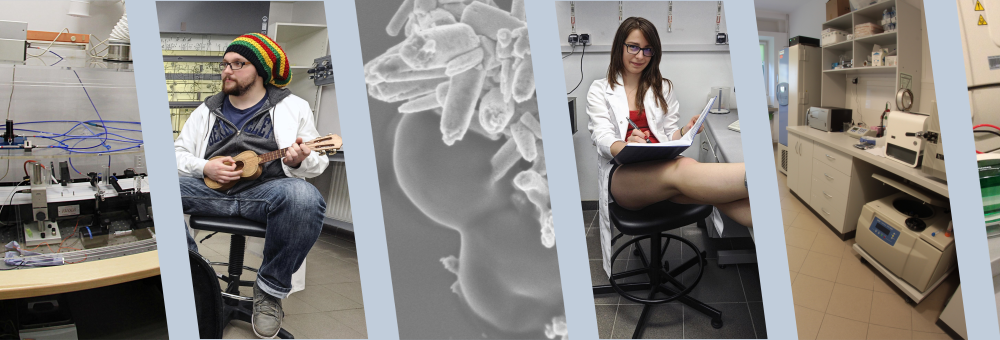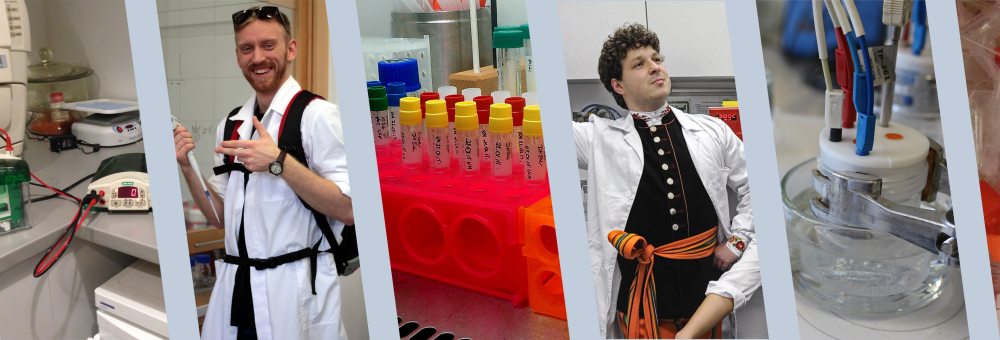Publication
Immobilization of galactose oxidase on self-assembled monolayers of thiols on Au and Ag surfaces
Author(s): Kaminska, Agnieszka and Holyst, Robert
Title: Immobilization of galactose oxidase on self-assembled monolayers of thiols on Au and Ag surfaces
Abstract: Galactose oxidase (GalOD) was immobilized on self-assembled monolayers thiols on silver and gold surfaces using trans-stilbene acid (DIDS) as the bridging DIDS is the symmetrical bifunctional reagent that reacted with amine moiety of the thiol and with primary amino groups of enzyme. Raman measurement revealed that onto cysteamine-modified silver and electrodes, bands corresponding to the galactose oxidase (about 1076, 1274?cm1 on Au and 762, 1058, 1274?cm1 on Ag ) appeared and demonstrated its immobilization onto Au and Ag surfaces. we have also observed changes in the ratio of conformers of adsorbed cysteamine molecules. Layers high content of trans conformer are transformed into layers mainly of cysteamine molecule in gauche conformation after oxidase adsorption. These observations deliver a strong for enzyme immobilization on cysteamine-modified gold and silver The surface plasmon resonance experiment gave a surface of similar to 8.4?x?107?g/cm2 for gold electrode modified using DIDS chemistry and 1.1?x?107?g/cm2 for the cysteamine modified gold substrate and demonstrated that galactose oxidase immobilized with DIDS coupling reagent are quite stable and be easily removed from the surface by treatment with a buffer The surface plasmon resonance results indicated that in this a multilayer of galactose oxidase have been immobilized. Our new of covalent attachment of enzymes seems to be quite promising as new way of manufacturing biosensors. Copyright (c) 2012 John Wiley \& Sons, Ltd.
Pages: 959-962
Journal: JOURNAL OF RAMAN SPECTROSCOPY
Volume: 43
ID: ISI:000306570400021
Year: 2012
DOI: 10.1002/jrs.3117









